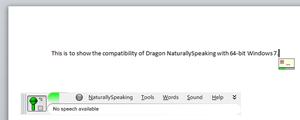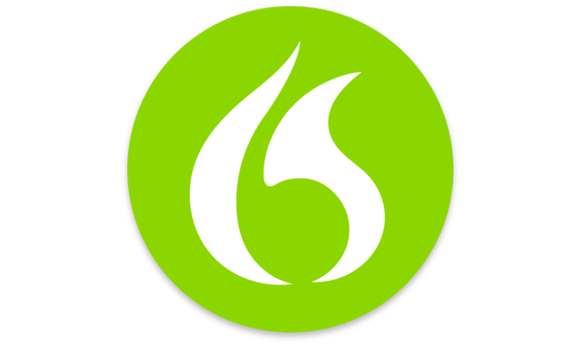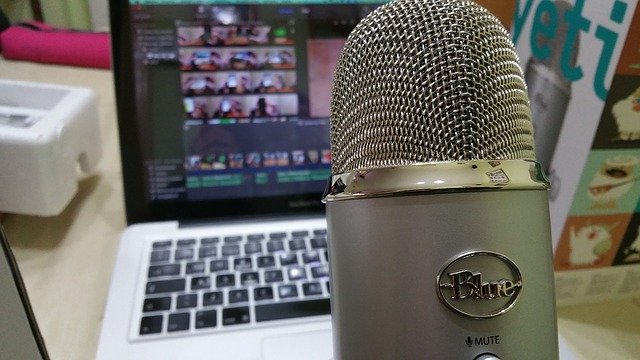Dragon legal Individual for $500 includes a specialized legal vocabulary and lets you work with contracts, briefs and other docs just by using your voice. Those who prefer to use Mac can benefit from two options: Dragon for Mac for $300 that is fully customizable and can work with presentations, emails, spreadsheets and, of course, documents. Nuance Dragon for Mac – Download / Free Trial / Upgrade / Speech Recognition Software. The all-new Dragon for Mac delivers fast speech recognition. Mar 15, 2014 Dragon Dictate for Mac, version 4 merges fast, accurate speech recognition and versatile transcription to fit the way you work. Dictate and edit documents, send email, transcribe voice memos from.
In October 2018, Nuance announced that it has discontinued Dragon Professional Individual for Mac and will support it for only 90 days from activation in the US or 180 days in the rest of the world. The continuous speech-to-text software was widely considered to be the gold standard for speech recognition, and Nuance continues to develop and sell the Windows versions of Dragon Home, Dragon Professional Individual, and various profession-specific solutions.
This move is a blow to professional users—such as doctors, lawyers, and law enforcement—who depended on Dragon for dictating to their Macs, but the community most significantly affected are those who can control their Macs only with their voices.
What about Apple’s built-in accessibility solutions? macOS does support voice dictation, although my experience is that it’s not even as good as dictation in iOS, much less Dragon Professional Individual. Some level of voice control of the Mac is also available via Dictation Commands, but again, it’s not as powerful as what was available from Dragon Professional Individual.
TidBITS reader Todd Scheresky is a software engineer who relies on Dragon Professional Individual for his work because he’s a quadriplegic and has no use of his arms. He has suggested several ways that Apple needs to improve macOS speech recognition to make it a viable alternative to Dragon Professional Individual:
- Support for user-added custom words: Every profession has its own terminology and jargon, which is part of why there are legal, medical, and law enforcement versions of Dragon for Windows. Scheresky isn’t asking Apple to provide such custom vocabularies, but he needs to be able to add custom words to the vocabulary to carry out his work.
- Support for speaker-dependent continuous speech recognition: Currently, macOS’s speech recognition is speaker-independent, which means that it works pretty well for everyone. But Scheresky believes it needs to become speaker-dependent, so it can learn from your corrections to improve recognition accuracy. Also, Apple’s speech recognition isn’t continuous—it works for only a few minutes before stopping and needing to be reinvoked.
- Support for cursor positioning and mouse button events: Although Scheresky acknowledges that macOS’s Dictation Commands are pretty good and provide decent support for text cursor positioning, macOS has nothing like Nuance’s MouseGrid, which divides the screen into a 3-by-3 grid and enables the user to zoom in to a grid coordinate, then displaying another 3-by-3 grid to continue zooming. Nor does Apple have anything like Nuance’s mouse commands for moving and clicking the mouse pointer.

When Scheresky complained to Apple’s accessibility team about macOS’s limitations, they suggested the Switch Control feature, which enables users to move the pointer (along with other actions) by clicking a switch. He talks about this in a video.
Unfortunately, although Switch Control would let Scheresky control a Mac using a sip-and-puff switch or a head switch, such solutions would be both far slower than voice and a literal pain in the neck. There are some better alternatives for mouse pointer positioning:

- Dedicated software, in the form of a $35 app called iTracker.
- An off-the-shelf hack using Keyboard Maestro and Automator.
- An expensive head-mounted pointing device, although the SmartNav is $600 and the HeadMouse Nano and TrackerPro are both about $1000. It’s also not clear how well they interface with current versions of macOS.
Regardless, if Apple enhanced macOS’s voice recognition in the ways Scheresky suggests, it would become significantly more useful and would give users with physical limitations significantly more control over their Macs… and their lives. If you’d like to help, Scheresky suggests submitting feature request feedback to Apple with text along the following lines (feel free to copy and paste it):
Because Nuance has discontinued Dragon Professional Individual for Mac, it is becoming difficult for disabled users to use the Mac. Please enhance macOS speech recognition to support user-added custom words, speaker-dependent continuous speech recognition that learns from user corrections to improve accuracy, and cursor positioning and mouse button events.
Thank you for your consideration!

Dragon Free Download Freeware Speech
Thanks for encouraging Apple to bring macOS’s accessibility features up to the level necessary to provide an alternative to Dragon Professional Individual for Mac. Such improvements will help both those who face physical challenges to using the Mac and those for whom dictation is a professional necessity.
At a glance
Cons
Our Verdict
I’ve been using speech recognition software for nearly 20 years, first experimenting with IBM’s ViaVoice, which required you to speak one word at a time. Over the years, I have watched as the software has improved, offering continuous speech recognition, and honing the accuracy of the speech recognition engines. The only major player for OS X is Nuance’s Dragon (formerly known as Dragon Dictate). Now at version 5, Dragon offers some of the biggest changes since this software was first introduced, both under the hood and on the screen.
Speech recognition software has long required that you use a specific type of microphone. I have looked at this type of microphone in a buying guide from 2011, and a more recent look at some wireless microphones. One of the biggest changes in Dragon 5 is that the software now supports internal microphones on Macs. Recognition is better with a microphone specifically designed for this usage, but in my testing I found that, in my quiet home/office, accuracy was excellent using the internal mic on my Retina iMac.
The most visible change in Dragon 5 is the slimmed-down interface. Dragon is now a headless application, which you access by clicking a menu bar icon. It has a small status window which you can use to control the microphone, pick from multiple options when making corrections, and getting some information about what you can say. As such, Dragon gets out of the way, letting you focus more on the text you are dictating.
Nuance says that Dragon’s accuracy has improved. It’s fair to say that each version of the software offers improvements in accuracy, and with version 5 it does feel a bit more precise. Nuance explained to me they have rewritten the speech recognition engine, and one of the biggest differences is the high level of accuracy out of the box. Dragon learns from your voice when you perform an initial microphone volume calibration—Dragon has you read for about 30 to 40 seconds to set the volume of your microphone—and, while using the app’s Voice Training feature improves recognition, Dragon’s ability to start correctly transcribing your voice immediately, and as efficiently as it does, is a huge step forward.
Another element of the new headless Dragon is the fact that you no longer need to type in the Note Pad that was available from within the application. Dragon is happy to type in any app: I use it in word processesors and text editors, Apple Mail, Messages, Twitter clients, and more. Dragon offers the same level of accuracy in every app.
Naturally, recognition improves over time, especially if you use a unique vocabulary. Dragon’s Voice Training helps the software learn your voice as you read some simple stories. But an even better way to improve recognition is to use the Vocabulary Training feature, where you let Dragon read documents that you have written. Dragon listens to the words you speak, but also looks at the context in which words are used. The more familiar it becomes with your specific vocabulary, and the way you order words, the more accurate it is.

You can also use Dragon to transcribe recordings, a feature that I described in my review of Dragon Dictate 3. You can use voice commands to control your Mac, and Dragon 5 supports more accents, such as Canadian, Southeast Asian, Indian, and Australian English. Full Text Control lets you talk and type, and issue commands, in Microsoft Word 2001 and 2016, as well as TextEdit. (You can talk and type in any application, as long as you issue the “Cache document” command each time you make changes from the keyboard.)
With “Menu walking,” you can tell Dragon to click menus, controlling any application. Say any commands in any menus, such as “Click Window Menu; Click Minimize,” for example, and Dragon executes them hands-free.
Dragon Voice Recognition For Mac Free Software

One feature that will be available soon, but I have not tested, is Dragon Anywhere. This is described as “a cloud-based app that provides continuous dictation capabilities […] on an iOS or android device.” We’ll have more about Dragon Anywhere when it’s available.
Dragon 5 has proven incredibly stable in my testing. While there were some glitches in the initial release of the software, a maintenance update seems to have fixed all the issues that I encountered.
Bottom line
This new version offers not only improved accuracy but a much better interface that doesn’t get in the way. If you’re used to dictating, you’ll definitely want to update to Dragon 5. If you’ve never used this software before, this is a great time to check it out. The fact that you can get excellent results without buying a specific microphone makes it more affordable, and easier to use.



